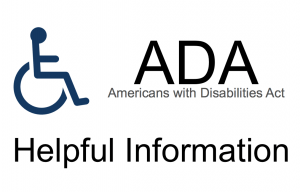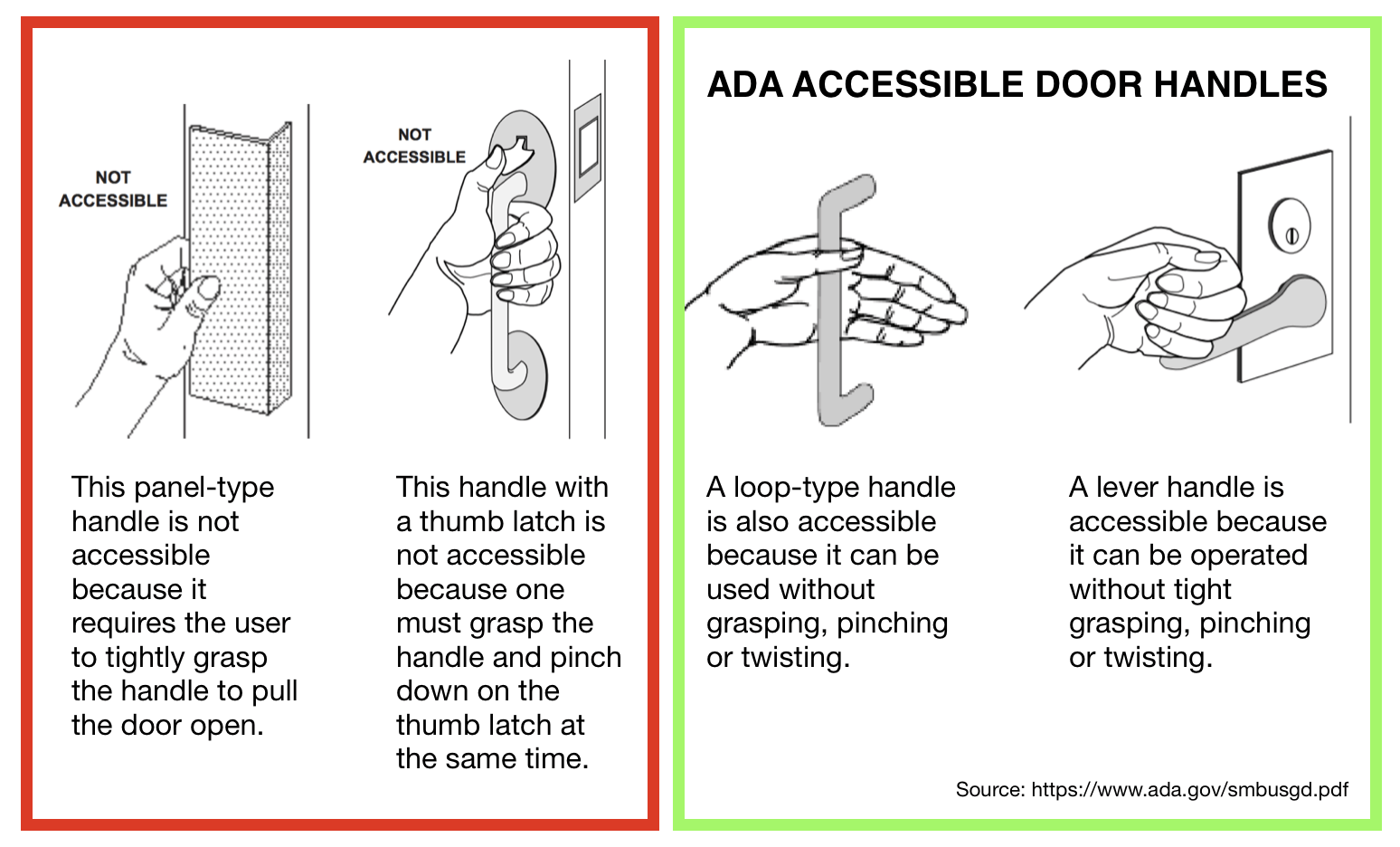Minnesota ADA Compliance General Contractor
The Americans with Disabilities Act (ADA) became law in 1990. The ADA is a civil rights law that prohibits discrimination against individuals with disabilities in all areas of public life, including jobs, schools, transportation, and all public and private places that are open to the general public.
Randahl Construction, Inc is a General Contractor located in Minnesota, that helps local businesses make ADA improvements and updates to their facilities. We have created this article of helpful tools to help educate and provide our clients with helpful information regarding The Americans with Disabilities Act.
[prompt type="left" title="Need Help with your ADA Construction Projects?" message="Bathrooms, Parking Lots, Sidewalks, Ramps, Entrances..." button_text="Let's Talk" href="https://randahlconstruction.com/contact/"]
The ADA is a civil rights law that prohibits discrimination against individuals with disabilities in all areas of public life, including jobs, schools, transportation, and all public and private places that are open to the general public.
Randahl Construction, Inc is a General Contractor located in Minnesota, that helps local businesses make ADA improvements and updates to their facilities. We have created this article of helpful tools to help educate and provide our clients with helpful information regarding The Americans with Disabilities Act.
[prompt type="left" title="Need Help with your ADA Construction Projects?" message="Bathrooms, Parking Lots, Sidewalks, Ramps, Entrances..." button_text="Let's Talk" href="https://randahlconstruction.com/contact/"]
Does Your Business need to be ADA Compliant?
The ADA requires businesses to make “reasonable accommodations” for people with qualified disabilities, but only if those businesses fit certain guidelines. So the question becomes, how can I tell if my business is required by the ADA to make those reasonable accommodations. Some portions of the Americans with Disabilities Act contain an exemption for businesses that employ fewer than 15 people, for example, while other provisions apply to companies that provide services to the public, regardless of size. How can you tell if your business is required to conform? Here are the facts, according to ADA, to help you decide.Helpful Information from the ADA Guide for Small Businesses by U.S. Department of Justice Civil Rights Division
Doors at Entrances to Businesses
Most entrances to stores and businesses use 36 inch wide doors that are wide enough to be accessible. However, some older doors are less than 36 inches wide and may not provide enough width (32 inch clear width when fully opened). Door openings can sometimes be enlarged. It may also be possible to use special “swing clear” hinges that provide approximately 1 1/2 inches more clearance without replacing the door and door frame. Inaccessible door hardware can also prevent access to the business. For example, the handle shown below requires the user to tightly grasp the handle to open the door. Many people with mobility disabilities and others with a disability that limits grasping, such as arthritis, find this type of handle difficult or impossible to use. In the above image the panel-type handle is not accessible because it requires the user to tightly grasp the handle to pull the door open. Other types of door hardware, such as a round door knob (which requires tight grasping and twisting to operate) or a handle with a thumb latch (see above -- center) are also inaccessible and must be modified or replaced, if doing so is readily achievable.
In the above image the panel-type handle is not accessible because it requires the user to tightly grasp the handle to pull the door open. Other types of door hardware, such as a round door knob (which requires tight grasping and twisting to operate) or a handle with a thumb latch (see above -- center) are also inaccessible and must be modified or replaced, if doing so is readily achievable.
Changing Your Door Hardware to Comply with ADA Regulation
Changing or adding door hardware is usually relatively easy and inexpensive. A round doorknob can be replaced with a lever handle or modified by adding a clamp-on lever. In some cases, a thumb latch can be disabled so the door can be pulled open without depressing the latch or the hardware may be replaced. A flat panel-type pull handle can be replaced with a loop-type handle. SOURCE: A PRIMER FOR SMALL BUSINESS (https://www.ada.gov)ADA Compliance in New Construction & Remodeling
New Construction and Alterations
The ADA requires that all new facilities built by public accommodations, including small businesses, must be accessible to and usable by people with disabilities. The 2010 Standards lay out accessibility design requirements for newly constructed and altered public accommodations and commercial facilities. Certain dates in the construction process determine which ADA standards – the 1991 Standards or the 2010 Standards – must be used.
If physical construction starts after March 15, 2012, the business must use the 2010 Standards.
Alterations & Remodels
When a small business undertakes an alteration to any of its facilities, it must, to the maximum extent feasible, make the alteration accessible. An alteration is defined as remodeling, renovating, rehabilitating, reconstructing, changing or rearranging structural parts or elements, changing or rearranging plan configuration of walls and full-height partitions, or making other changes that affect (or could affect) the usability of the facility.
Examples include re-striping a parking lot, moving walls, moving a fixed ATM to another location, installing a new sales counter or display shelves, changing a doorway entrance, replacing fixtures, flooring or carpeting. Normal maintenance, such as re-roofing, painting, or wallpapering, is not an alteration.
SOURCE: A PRIMER FOR SMALL BUSINESS (https://www.ada.gov)
ADA Compliance in Existing Facilities
Many business facilities were built without features that accommodate people with disabilities, including people who use wheelchairs. This lack of accessibility makes it impossible for many people with disabilities to take part in everyday activities such as going to work or shopping in a store. The ADA recognizes that, for people with disabilities to participate in the everyday activities in their communities, they need to have access to the goods and services provided by businesses. While it is not possible for many businesses, especially small businesses, to make their facilities fully accessible, there is much that can be done without much difficulty or expense to improve accessibility. Therefore, the ADA requires that accessibility be improved without taking on excessive expenses that could harm the business. If you own or operate a business that serves the public you must remove physical “barriers” that are “readily achievable,” which means easily accomplishable without much difficulty or expense. The “readily achievable” requirement is based on the size and resources of the business. So larger businesses with more resources are expected to take a more active role in removing barriers than small businesses. The ADA also recognizes that economic conditions vary. When a business has resources to remove barriers, it is expected to do so; but when profits are down, barrier removal may be reduced or delayed. Barrier removal is an ongoing obligation - you are expected to remove barriers in the future as resources become available.Helpful ADA Links & Information
• ADA.gov - Information & Technical Assistance on the Americans with Disabilities Act The United States Department of Justice Civil Rights Division website. • Minnesota ADA Information (Minnesota Council On Disability) The Minnesota Council On Disability has created a very detailed website about the ADA, including policy, training and technical resources.
• Protect Your Business, Remove Barriers (Minnesota Council On Disability)
The ADA requires that businesses remove architectural barriers in existing facilities when it is "readily achievable" to do so. The above article gives an in depth look at how business owners and executives can make that happen.
• ADA Bathroom Information (PDF)
This document is meant to be a primer for you and your business. If your issue is not addressed here please refer to the end of the document for comprehensive resources to ensure your business is accessible.
• ADA National Network Information, Guidance & Training on the Americans with Disabilities Act
Find definitions related to technology, disability and law in this Glossary of ADA Terms
The Minnesota Council On Disability has created a very detailed website about the ADA, including policy, training and technical resources.
• Protect Your Business, Remove Barriers (Minnesota Council On Disability)
The ADA requires that businesses remove architectural barriers in existing facilities when it is "readily achievable" to do so. The above article gives an in depth look at how business owners and executives can make that happen.
• ADA Bathroom Information (PDF)
This document is meant to be a primer for you and your business. If your issue is not addressed here please refer to the end of the document for comprehensive resources to ensure your business is accessible.
• ADA National Network Information, Guidance & Training on the Americans with Disabilities Act
Find definitions related to technology, disability and law in this Glossary of ADA Terms
How Randahl Construction can help you with ADA Compliance?
-
New Parking Lots & Sidewalks
-
Interior Remodels
-
Interior Doors & Exit Doors
-
Bathroom Remodels - Toilets, Sinks, Grab Bars
-
Entrance and Exit Doors
-
Handicap Ramps
-
and more...
